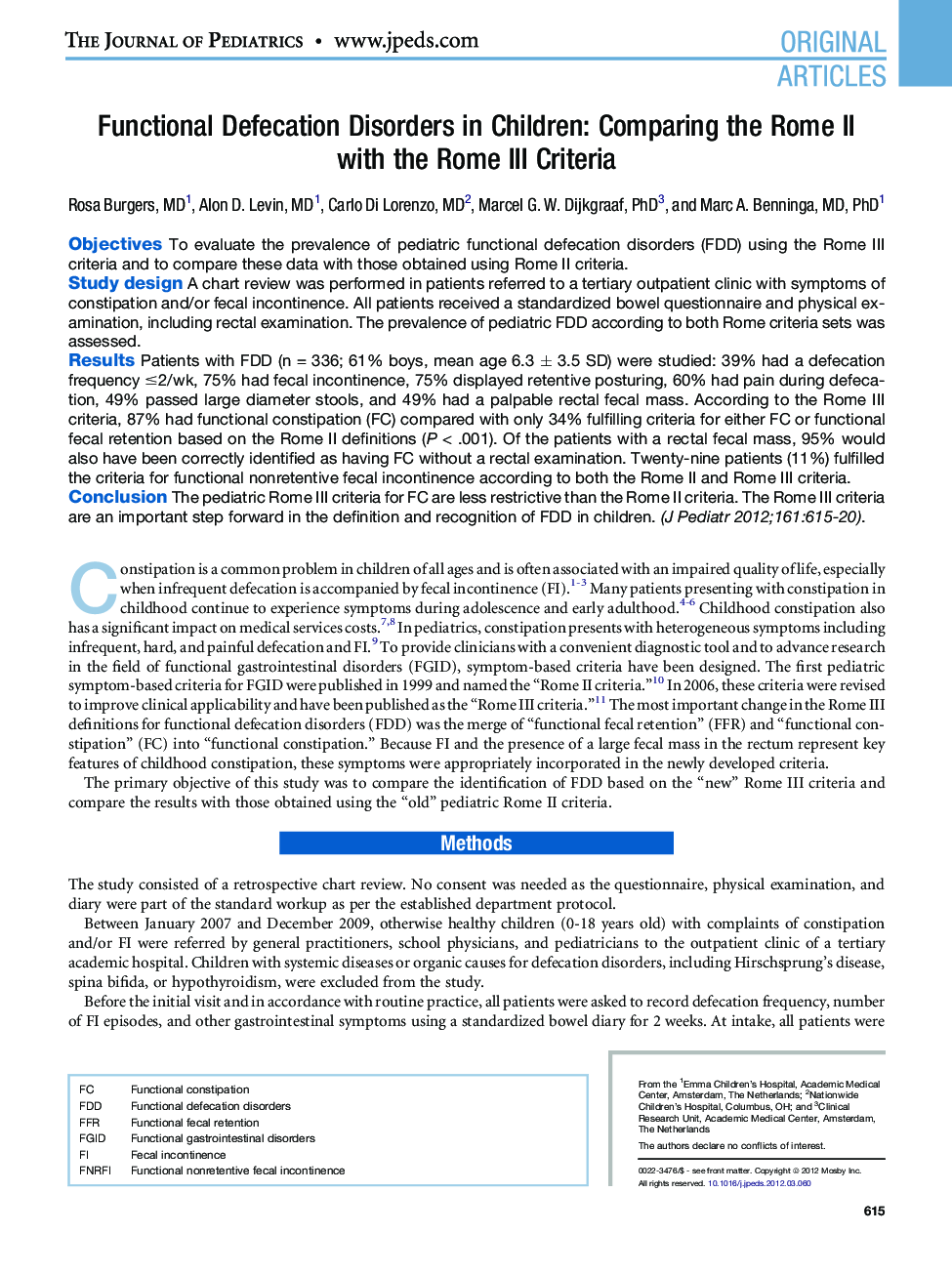| Article ID | Journal | Published Year | Pages | File Type |
|---|---|---|---|---|
| 6224804 | The Journal of Pediatrics | 2012 | 7 Pages |
ObjectivesTo evaluate the prevalence of pediatric functional defecation disorders (FDD) using the Rome III criteria and to compare these data with those obtained using Rome II criteria.Study designA chart review was performed in patients referred to a tertiary outpatient clinic with symptoms of constipation and/or fecal incontinence. All patients received a standardized bowel questionnaire and physical examination, including rectal examination. The prevalence of pediatric FDD according to both Rome criteria sets was assessed.ResultsPatients with FDD (n = 336; 61% boys, mean age 6.3 ± 3.5 SD) were studied: 39% had a defecation frequency â¤2/wk, 75% had fecal incontinence, 75% displayed retentive posturing, 60% had pain during defecation, 49% passed large diameter stools, and 49% had a palpable rectal fecal mass. According to the Rome III criteria, 87% had functional constipation (FC) compared with only 34% fulfilling criteria for either FC or functional fecal retention based on the Rome II definitions (P < .001). Of the patients with a rectal fecal mass, 95% would also have been correctly identified as having FC without a rectal examination. Twenty-nine patients (11%) fulfilled the criteria for functional nonretentive fecal incontinence according to both the Rome II and Rome III criteria.ConclusionThe pediatric Rome III criteria for FC are less restrictive than the Rome II criteria. The Rome III criteria are an important step forward in the definition and recognition of FDD in children.
